“What bird’s nest is this?” The question came from a high school classmate and long-time friend of Jewel’s accompanied by a photo of a bird’s nest (photo 2). The friend and her husband found the nest on top of a light on their back porch. With our suspicions that it was probably an Eastern Phoebe’s (photo 3) nest, we were easily able to quickly confirm that was correct. However, along with the two whitish eggs (the left one looks a little bluish in the photo because of the lighting) there was a third larger egg with some dark spots on it. Once again, we were able to quickly confirm that the larger egg was indeed a Brown-headed Cowbird egg.
Brown-headed Cowbirds are parasite birds. They do not build nests of their own or ever raise their own chicks. They have developed the practice of always laying their eggs in the nests of other birds and leaving the chore of feeding and raising the young to the parasitized unwitting host birds that went to the effort of building their own nest with the expectation of raising their own offspring.
Not only do the female cowbirds sneak in and lay their egg in the other species’ nest, but they also brazenly remove one of the host parent’s own eggs to increase the likelihood that the Cowbird’s chick will be the lone survivor of the nesting effort of the host birds. To further increase that likelihood, the Cowbird’s egg is programed to hatch quicker than the host bird’s own eggs. When the Cowbird’s chick is born it has an innate reflex to push anything else in the nest over the edge and out, whether it be any other eggs or even the host bird’s own babies that may have hatched before the Cowbird chick.
Female cowbirds will lay up to 30 eggs in a single breeding season. One of the saddest moments in my entire birding lifetime was observing a beautiful little male Hooded Warbler feeding a Brown-headed Cowbird chick that was more than twice its size. In Michigan, the Brown-headed Cowbirds were a very serious threat to wipe out the Kirtland’s Warbler, an endangered species particularly susceptible to cowbird parasitism. Fortunately, the U S Fish and Wildlife Service undertook a widespread cowbird trapping program in the Kirtland’s breeding areas which has contributed significantly to the gradual regrowth of the Kirtland’s population.
Brown-headed Cowbirds developed this parasitic breeding technique many years ago in the mid-west when they followed the traveling buffalo herds and had to keep moving as the herds kept moving. They could not take time off to build a nest or raise their own young as the constantly moving herds were their only food source. As settlers came and cut down the forests, they opened whole new territories of potential cowbird food sources with numerous stationary cattle farms. The Brown-headed Cowbirds expanded their territories both east and west so that they now are found throughout all North America. And bird feeders have become a new and popular food source for the cowbirds.
Male Brown-headed Cowbirds are a shiny black with distinctive brown heads (top of page). Females are a dirty brown with light streaking on the back and belly (photo 4) while juvenile males become a mottled black and brown until their full adult plumage develops (photo 5).
In addition to Brown-headed Cowbirds there are two more species of cowbirds with limited ranges in North America. The Bronzed Cowbird, a primarily Mexican species, (photo 6) with its bright red eye in both the male and female, has a very limited range in southern most Texas, New Mexico and Arizona. They overlap with Brown-headed Cowbirds and it is not uncommon to see both species on a feeder at the same time (photo 7)
The Shiny Cowbird is a bird of Cuba and the West Indies, but in the past 35 years they have been found in south Florida and along the coast as far north as South Carolina. Jewel and I have seen them at Flamingo in the Everglades, but unfortunately, I don’t have any photos to share with you. Another project for another day.
The Cuckoo was made famous by William Shakespeare who was familiar with the same trait of the cowbirds that the Cuckoo also has, that is, laying its eggs in other birds’ nests and having the host bird raise the Cuckoo’s young. Shakespeare made the Cuckoo famous as the symbol of male infidelity, probably because there weren’t any (and still aren’t any) cowbirds in Great Britain.
While cowbirds parasitize over 160 different species of birds, some species have learned to identify their eggs and either abandon the nest or build a new nest on top of the old nest with the cowbird egg in it. I have seen Yellow Warbler nests with as many as three nests on top of each other, with the lower nests each containing a cowbird egg.
Red-winged Blackbirds are notorious for chasing cowbirds out of their nesting areas. When it comes to human Cuckoos/cowbirds the offenders are fortunate that there are no identifiable eggs visible to give them away. Then again, in the United States with its strong 2nd Amendment rights, that offender, if discovered, may be in a very precarious position. Too bad that such human offenders don’t have an easily recognizable persona that, like cowbirds, would give them away and make them easy to trap and remove from society. There’s a project for another day that I am not going to touch with a 10-foot pole.
For more on Brown-headed Cowbird history, see: nationalzoo.si.edu/migratory-birds/news/brown-headed-cowbirds-buffalo-birds-modern-scourge.
For more on Shiny Cowbirds breeding in North America, click here. .
For more on Cowbird impact on Kirtland’s Warbler, click here.







